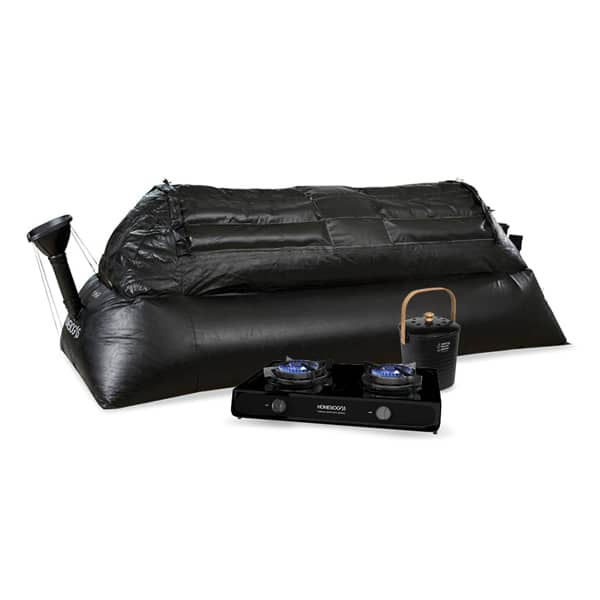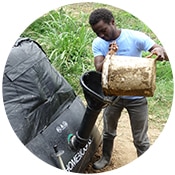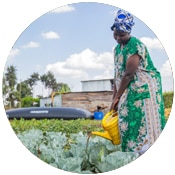Looking to practice regenerative agriculture, improve plant health, and increase your farm’s output? No matter the size of your farm, you can join hundreds of farmers worldwide who create their own organic bio-fertilizer and supplement their plants with a huge bio-advantage.
With HomeBiogas Bio-fertilizer, I experienced a 30% increase in crop production while saving money on both gas and chemical fertilizers.
Soil health is key to successful farming. Convert organic waste into rich bio-fertilizer that fulfills your plants’ yield potential.
We offer our farmers a full turnkey solution, including system installation support, training, and maintenance – so that farmers are up and running quickly and easily.
Our solutions do more than just empower farms and farmers. They also reduce carbon emissions and help fight climate change. Therefore, our systems can also be used to implement carbon projects that generate carbon offset credits.
The farm system is ideal for effective carbon projects.


Upscale or downscale your waste-to-energy operation, in sync with the seasons and other important parameters. Choose the Biogas system that best suits your farm today:

Simply drop your organic waste into the HomeBiogas anaerobic digester system.

Give it a few hours and let the micro-organisms work their magic to produce clean cooking gas and liquid fertilizer.

Enjoy using the clean cooking gas produced

Enrich your soil and plants with the organic liquid bio-fertlizer produced.
No, the biodigestion process helps to increase the amount of nutrients, micro-organisms and bio stimulants in the Bio-fertilizer and makes it easier for the soil to absorb.
Yes, you can. The Bio-fertilizer is a liquid that needs to be applied carefully because if it is too concentrated it can cause harm to the soil or plants over time. But applied in the correct concentration and application method, it is completely fine.
This Bio-fertilizer contains water, microorganisms, amino acids, biostimulants, minerals (all the essential nutrients required by the crops), and organic matter. All through natural processes.
It depends on the conditions of storage, after a week the difference is negligible.
There is a difference, farm yard manure is a solid and in the early stages of decomposition while bio-fertilizer is a result of decomposition enriched with bacteria and it is liquid and more easily absorbed in soil.
It depends on the size of the unit and the amount of organic matter you put in. It could produce between 50L – 150L a day!
On flat, level ground with direct sunlight and no further than 50 meters from the kitchen.
The size of the system is 7M long x 2M width x 80CM high.
Yes, it needs to be serviced every 8-12 months depending on the moisture content of the pellets.
You can use a maximum of up to 50 meters for optimal gas pressure on the stove.
The lifespan of the system is over 10 years.
Where cooking is done for an optimum amount of time (5-6) hours, there is rarely any excess gas. But if there is excess gas generated and not used, it escapes through the pressure release mechanism.
At the point of installation, there is one initial feeding of 800kgs of manure and 3500-5000 liters of water. There is no more feeding required during the wait period of the next 3 weeks (21 days).
After the initial feeding at the point of installation, the biological processes begin inside the system. Usable gas is generated after a period of 2-3 weeks (14-21 days).
Animal manure, the best type recommended is cow, pig or horse.
No. The system works by way of displacement. The outlet pushes out the bio-slurry, and the excess gas escapes through the pressure release mechanism near the outlet.
The system is safe, user friendly and meets both the ISO (International Organization for Standardization) 23590 standard and CE mark for biogas systems.




